In the culinary world, where precision meets creativity, the braising pan emerges as the unsung hero, transforming kitchens into arenas of culinary magic.
This versatile kitchen tool is not merely a pan; it’s a conductor of flavors, a maestro of tenderness, and a vessel of culinary innovation. As its name suggests, the braising pan is a culinary chameleon, seamlessly shifting between sautéing, searing, and simmering with the grace of a seasoned chef.
It’s the silent architect behind succulent stews, perfectly seared meats, and dishes that dance on the palate. Let’s unravel the secrets held within the gleaming metal walls of the braising pan, where the alchemy of ingredients and the artistry of cooking converge.
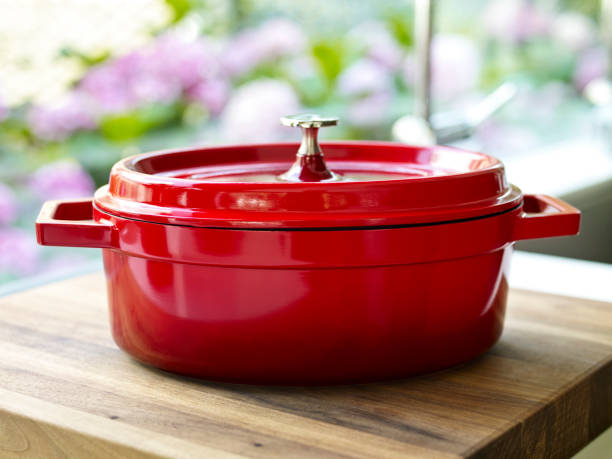
What Is A Braising Pan
A braising pan, commonly known as a braiser, is a versatile kitchen cookware that combines the functions of both a frying pan and a pot.
It features a wide, shallow design with low sides, making it ideal for searing, browning, and slow-cooking various dishes. This culinary tool is essential for achieving rich flavors and tender textures in stews, roasts, and other one-pot meals.
Versatility in Culinary Mastery
The braising pan’s unique design lends itself to a myriad of cooking techniques, from the initial stages of searing and browning to the slow-cooking perfection of hearty stews and roasts.
The wide surface area allows for efficient evaporation and concentration of flavors, while the low sides facilitate easy access for turning and stirring ingredients. As a result, this kitchen essential becomes the epicenter for creating dishes that boast depth, complexity, and a delightful medley of textures.
Crafting Flavorful One-Pot Wonders
At the heart of the braising pan’s appeal is its ability to effortlessly transition from stovetop to oven, a quality highly coveted by chefs and home cooks alike. This seamless integration of cooking methods ensures that dishes receive the optimal combination of heat, allowing for thorough browning and uniform cooking.
From tender braised meats to vegetable-infused delights, the braiser becomes the vessel of choice for those seeking to elevate their one-pot culinary creations.
Common Lexicon and Phrases
Enthusiasts often praise the braising pan for its ‘all-in-one’ convenience, citing its capacity to bring out the ‘umami’ in dishes. Home cooks frequently discuss its ‘even heat distribution’ and ‘heat retention’ qualities, underscoring the instrument’s reliability in achieving consistent and delectable results.
As a staple in kitchens worldwide, the braising pan is celebrated for its ‘versatility,’ ‘durability,’ and the ‘flavorful magic’ it imparts to an array of recipes.
The Mechanics of Braising Pans
Braising pans, often hailed as culinary workhorses, are indispensable tools in the kitchen. These versatile vessels, also known as braisers, seamlessly combine the functions of frying pans and Dutch ovens, providing an optimal environment for slow cooking and tenderizing meats.
The mechanics of braising pans are designed for efficiency, with thick, heat-retaining bottoms ensuring even distribution for a consistent cooking experience. The wide surface area allows for ample browning, while the high sides prevent splattering.
Home cooks and professional chefs alike appreciate the convenience and versatility of these kitchen essentials. When searching for the perfect braising pan, consider features like durable construction, non-stick surfaces, and secure lids.
Elevate your culinary prowess with the precision and performance offered by these essential kitchen companions.
Design and Construction
When delving into the design and construction of braising pans, it’s essential to appreciate the meticulous engineering that enhances their culinary performance. These pans are typically crafted from materials such as stainless steel or cast iron, ensuring durability and even heat distribution.
The thoughtful design incorporates ergonomic handles for a secure grip and facilitates seamless maneuvering in the kitchen. Many braising pans boast a non-stick interior, simplifying both cooking and cleaning processes.
The construction often includes a snug-fitting lid, allowing for moisture retention and optimal slow-cooking conditions. Whether you’re a home cook or a professional chef, the thoughtful design and robust construction of braising pans elevate your culinary experience to new heights.
Explore the market for features like heat-resistant handles and dishwasher-safe components to further enhance the usability of these indispensable kitchen tools.
Key Components
The functionality of braising pans lies in their key components, each playing a crucial role in achieving culinary perfection.
- The pan body: Typically constructed from materials like stainless steel or cast iron, serves as the foundation for even heat distribution and durability.
- A well-fitted lid: Another essential component, traps moisture, creating a controlled cooking environment ideal for slow braising.
- Sturdy handles: Designed with ergonomic precision, facilitate safe and comfortable handling, ensuring a seamless cooking experience.
- The heating elements: Integrated into the pan’s design, contribute to the efficient and consistent temperature regulation required for optimal braising results.
Together, these key components harmonize to transform the braising pan into a versatile culinary ally, capable of producing tender, flavorful dishes with every use. Explore models with advanced features in each component to tailor your braising experience to perfection.
Applications in Cooking
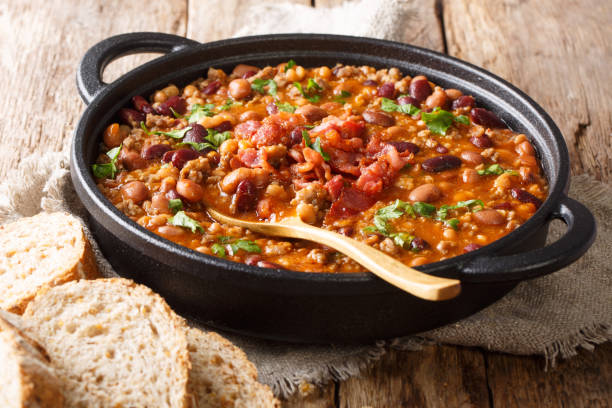
Braising pans, with their versatile design, find applications in various cooking scenarios, making them indispensable kitchen companions. These culinary workhorses excel in slow-cooking techniques, allowing chefs to achieve succulent and tender results with meats and vegetables.
The wide surface area of the pan body is ideal for browning ingredients before transitioning into the slow-braising process, enhancing the depth of flavor in dishes. The well-fitted lid plays a key role in creating a moist cooking environment, essential for developing rich and savory flavors.
The efficient heating elements contribute to precise temperature control, making braising pans suitable for a range of cooking methods, from simmering stews to gently frying delicate ingredients.
Whether you’re a home cook or a professional chef, the versatile applications of braising pans elevate your culinary capabilities and broaden the spectrum of dishes you can master with ease.
Braising Technique
The braising technique, a culinary art form that embraces the synergy of flavors and textures, relies heavily on the use of specialized braising pans. This cooking method involves the initial searing or browning of ingredients on the pan’s wide surface, enhancing their taste and visual appeal.
As the lid snugly fits over the pan body, it traps steam, creating a moist and controlled cooking environment perfect for slowly tenderizing meats and vegetables. The low, consistent heat provided by the heating elements ensures a gradual breakdown of connective tissues, resulting in dishes that are both succulent and flavorful.
Chefs often turn to braising pans to master this technique, appreciating the even heat distribution and precise temperature control that these versatile tools provide. Elevate your culinary skills by exploring the nuanced art of braising, using these pans as your trusted allies in achieving exquisite, melt-in-your-mouth creations.
Versatility in Cooking
The true beauty of braising pans lies in their remarkable versatility, making them an indispensable asset in the culinary world. These pans seamlessly adapt to various cooking styles, from slow braising to sautéing and simmering.
Their wide surface area is perfect for searing meats or caramelizing vegetables before transitioning into a slow-cooking phase. The well-designed lid traps moisture, enhancing flavors and ensuring a tender result.
Handles, ergonomically crafted, make these pans easy to maneuver, adding to their practicality. With the ability to move from stovetop to oven seamlessly, braising pans accommodate a wide array of recipes.
Home cooks and professional chefs alike appreciate the flexibility and precision these pans bring to the kitchen, making them an invaluable tool for crafting diverse and delectable dishes. Explore the world of culinary possibilities by incorporating the versatile nature of braising pans into your cooking repertoire.
Types of Braising Pans
1. Electric Braising Pans
Electric braising pans stand out as versatile and efficient kitchen appliances, designed to simplify and enhance the cooking experience. These pans rely on electricity for their heating elements, providing precise temperature control that allows for consistent and even cooking. The electric-powered mechanism makes them ideal for settings where gas may not be readily available or practical.
Equipped with a thermostat, electric braising pans offer cooks the ability to set and maintain specific temperatures, ensuring optimal results for a variety of recipes. The wide, flat cooking surface facilitates even browning, while the incorporation of a durable non-stick coating promotes easy food release and hassle-free cleaning.
Home cooks and professional chefs appreciate the convenience and adaptability of electric braising pans, as they seamlessly transition from sautéing and searing to slow cooking or simmering. Their user-friendly controls and efficient performance make them an essential tool for those seeking precision and reliability in the kitchen.
Whether you’re preparing hearty stews or delicate braised dishes, the electric braising pan adds a touch of modern efficiency to your culinary endeavors. Explore the possibilities and elevate your cooking experience with this advanced and versatile kitchen appliance.
2. Gas Braising Pans
Gas braising pans, a staple in professional kitchens, bring a robust and responsive cooking experience to the forefront. Fueled by gas, these pans offer rapid heating, allowing for quick temperature adjustments to meet the demands of various recipes. The direct flame imparts a distinct flavor profile to dishes, enhancing the culinary experience.
With a spacious cooking surface, gas braising pans excel in searing, browning, and simmering, providing chefs with a versatile tool for diverse cooking techniques. The manual control over the flame intensity empowers chefs to fine-tune the cooking process, ensuring precision and consistency in results.
Designed for heavy-duty use, gas braising pans are commonly found in commercial kitchens where high-volume cooking is routine. The durability and efficiency of these pans make them reliable workhorses, capable of handling large batches of food with ease.
Whether you’re crafting savory stews or delicately braised meats, gas braising pans offer a powerful and customizable cooking solution. Embrace the control and efficiency of gas-powered cooking to elevate your culinary creations and meet the demands of a dynamic kitchen environment.
Advantages of Using a Braising Pan
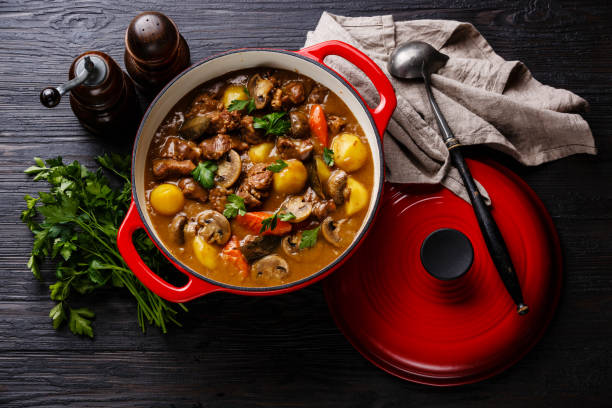
Using a braising pan in your kitchen arsenal provides a range of advantages that enhance the cooking process and contribute to exceptional culinary outcomes:
- Versatility: Braising pans adapt to various cooking techniques, from searing and sautéing to slow braising and simmering, making them versatile tools for a wide array of recipes.
- Even Heat Distribution: The design of braising pans ensures even heat distribution across the cooking surface, promoting consistent and thorough cooking of ingredients.
- Precise Temperature Control: Many braising pans, whether electric or gas-powered, offer precise temperature control, allowing chefs to fine-tune the cooking process for optimal results.
- Moisture Retention: The well-fitted lids on braising pans trap moisture, creating a controlled cooking environment that enhances flavors and results in tender, succulent dishes.
- Time Efficiency: The ability to transition from stovetop to oven seamlessly expedites cooking times, making braising pans particularly efficient for preparing a variety of dishes.
- Large Cooking Capacity: Designed to handle substantial quantities of food, braising pans are suitable for both home and commercial kitchens, accommodating the preparation of meals in larger batches.
- Durability: Whether constructed from stainless steel, cast iron, or other robust materials, braising pans are built to withstand heavy use, ensuring longevity in the kitchen.
- Ease of Cleaning: Non-stick surfaces and thoughtful designs simplify the cleaning process, making braising pans practical and user-friendly for everyday cooking.
Incorporating a braising pan into your kitchen not only broadens your culinary capabilities but also streamlines the cooking process, making it an invaluable tool for achieving exceptional results in the kitchen.
Efficiency in Cooking
Braising pans contribute significantly to efficiency in cooking, streamlining the culinary process in various ways:
- Time-Saving: The ability to seamlessly transition from stovetop searing to oven braising accelerates cooking times, allowing for efficient preparation of a diverse range of dishes.
- Versatile Functionality: The adaptability of braising pans to different cooking techniques reduces the need for multiple cookware items, streamlining the cooking process and minimizing dishwashing.
- Consistent Results: Even heat distribution across the pan’s surface ensures uniform cooking, contributing to consistent and predictable results with every use.
- Precision Control: Whether electric or gas-powered, braising pans offer precise temperature control, enabling chefs to tailor the cooking environment to the specific requirements of each recipe.
- Batch Cooking: With large cooking capacities, braising pans accommodate sizable batches of food, making them ideal for efficiently preparing meals in quantity, whether for family dinners or commercial kitchens.
- Easy Cleanup: Non-stick surfaces and user-friendly designs simplify the cleaning process, reducing post-cooking cleanup time and effort.
- Moisture Retention: The well-designed lids on braising pans trap moisture, creating an environment that enhances flavors and contributes to the tenderization of meats.
- Durability: Built to withstand heavy use, braising pans are durable and reliable, ensuring they remain efficient kitchen workhorses over the long term.
Incorporating a braising pan into your kitchen routine not only enhances the quality of your culinary creations but also optimizes the efficiency of your cooking process, making it an essential tool for both home cooks and professional chefs alike.
Enhanced Flavor and Texture
The use of braising pans in cooking is synonymous with an elevation of flavor and texture in culinary creations. The slow, controlled cooking process facilitated by these pans allows ingredients to meld together, enhancing the depth and complexity of flavors.
Meats become succulent and tender, absorbing the rich essence of seasonings and aromatics. Vegetables, gently simmered, retain their vibrant colors and develop a satisfying, melt-in-your-mouth texture.
The sealed environment created by the well-fitted lid ensures that every infusion of taste is captured, resulting in dishes that are not only delicious but also exquisitely nuanced.
Whether preparing hearty stews, delicate braised meats, or vegetable medleys, the use of braising pans becomes a culinary art, transforming ordinary ingredients into extraordinary dining experiences filled with enhanced flavor and delightful textures.
How to Choose the Right Braising Pan
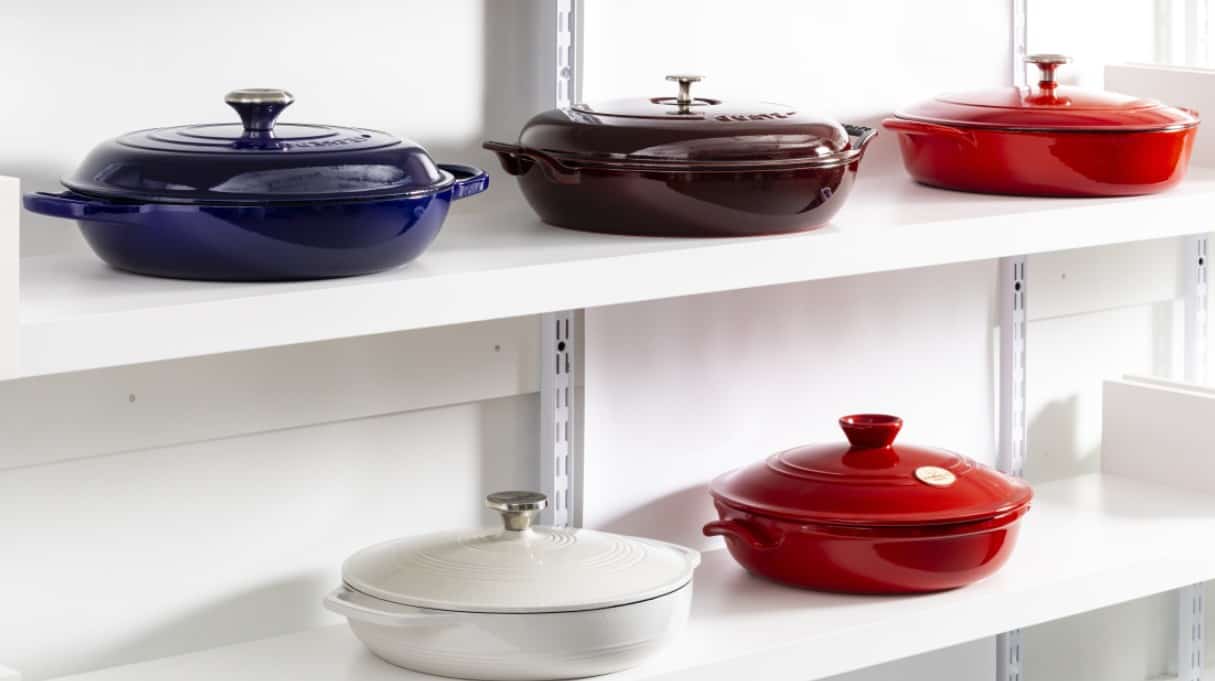
Choosing the right braising pan involves thoughtful consideration of your cooking needs and an assessment of the material and durability of the pan.
Consideration of Cooking Needs
- Size and Capacity: Evaluate the size of your typical recipes and choose a braising pan with an appropriate capacity to accommodate your cooking requirements.
- Versatility: Consider the range of cooking techniques you employ. Look for a braising pan that can seamlessly transition from stovetop searing to oven braising for increased versatility.
- Heat Source Compatibility: Ensure the pan is compatible with your kitchen’s heat sources, whether gas, electric, or induction, to guarantee optimal performance.
Material and Durability
- Construction Material: Assess the materials used in the pan’s construction. Stainless steel and cast iron are popular choices known for durability and even heat distribution.
- Non-Stick Coating: If ease of cleaning is a priority, consider a braising pan with a non-stick coating, which simplifies food release and maintenance.
- Handles and Lid Quality: Check the quality of handles for ergonomic design and heat resistance. A well-fitted lid is essential for moisture retention and optimal braising conditions.
- Brand Reputation: Research and consider reputable brands known for producing high-quality braising pans to ensure a reliable and long-lasting addition to your kitchen.
Maintenance and Cleaning Tips
Maintaining and cleaning your braising pan properly ensures its longevity and optimal performance. Follow these tips to keep your braising pan in top condition:
Proper Care for Longevity
Proper care is the key to ensuring the longevity of your braising pan, preserving its functionality and performance for years to come. Regular maintenance starts with gentle cleaning using mild detergents and non-abrasive tools, particularly for pans with non-stick surfaces.
For cast iron pans, a consistent seasoning routine helps prevent rust and maintains their unique cooking properties. Always allow the braising pan to cool before cleaning to avoid thermal stress.
Thoroughly dry the pan after washing to prevent moisture-related issues, such as rust or corrosion. Store the pan in a cool, dry place and, if stacking, use protective layers to prevent scratches.
Regularly inspect handles and tighten them if needed to ensure safety and stability during use. Adhering to these care practices not only safeguards your investment but also enhances the pan’s resilience and ability to deliver superb cooking results over an extended period.
Cleaning guidelines
Cleaning your braising pan properly is crucial for maintaining its performance and extending its lifespan. Here are comprehensive cleaning guidelines:
- Cool Down: Allow the braising pan to cool down after cooking. Cleaning a hot pan can cause damage and reduce its longevity.
- Hand Washing: Hand wash the pan with warm, soapy water using a soft sponge or cloth. For stubborn stains, soak the pan to loosen debris before cleaning.
- Avoid Abrasives: Do not use abrasive pads, scouring powders, or harsh cleaning agents, especially on non-stick surfaces, as they can damage the coating.
- Non-Stick Pans: For pans with non-stick coatings, avoid metal utensils. Opt for wooden or silicone utensils to prevent scratches.
- Cast Iron Seasoning: If your pan is made of cast iron, season it regularly with a thin layer of oil to maintain its non-stick properties and prevent rust.
- Dry Thoroughly: Towel dry the pan immediately after washing to prevent water spots, rust, or corrosion. If needed, air dry in a warm oven to ensure complete drying.
- Avoid Dishwashers: While some pans may claim to be dishwasher-safe, hand washing is often gentler. Check the manufacturer’s instructions before using a dishwasher.
- Handle with Care: Handle the pan with care during cleaning to prevent accidental bumps or drops. Inspect handles periodically and tighten them if needed.
- Store Properly: Store the braising pan in a cool, dry place. If stacking, place protective layers between pans to prevent scratches or damage to non-stick surfaces.
- Regular Inspections: Periodically inspect the pan for any signs of wear, damage, or loss of non-stick properties. Address any issues promptly to maintain optimal performance.
By following these cleaning guidelines, you’ll ensure that your braising pan remains in top condition, ready to deliver exceptional cooking results every time you use it.
Storage recommendations
Proper storage is essential for preserving the integrity of your braising pan and maximizing its longevity. To ensure optimal performance, store the pan in a cool, dry place to prevent exposure to humidity or extreme temperatures that can lead to rust or damage.
If you need to stack pans, place protective layers, such as soft cloths or paper towels, between them to prevent scratches and preserve non-stick coatings. Avoid overcrowding in storage areas, allowing for adequate ventilation and preventing any unnecessary pressure on the pan’s handles or surfaces.
For pans with lids, store them separately or use soft separators to prevent potential scratching. Regularly inspect the pan for any signs of wear, loose handles, or damage during storage, addressing issues promptly to maintain its quality.
By adhering to proper storage recommendations, you ensure that your braising pan remains in top condition, ready for reliable and exceptional cooking performance whenever you reach for it.
Popular Recipes Suited for Braising Pans
Braised Short Ribs
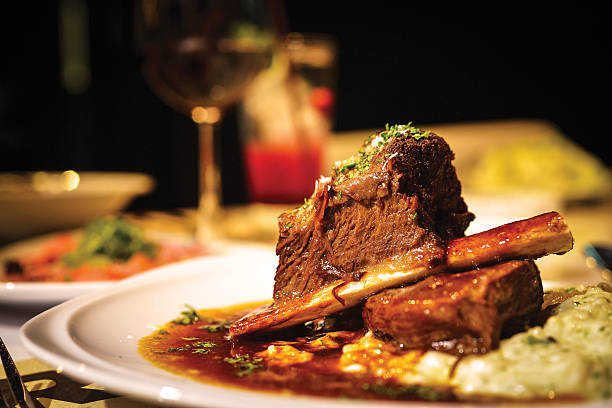
Braising pans are perfectly suited for creating succulent and flavorful Braised Short Ribs. Start by searing the ribs in the wide surface of the pan, allowing them to develop a rich crust.
Then, slow-cook the ribs in a savory broth or wine-based liquid, utilizing the well-fitted lid to trap moisture and enhance tenderness. The even heat distribution of the braising pan ensures that each rib absorbs the delicious flavors, resulting in a mouthwatering dish that falls off the bone.
Braised Chicken with Vegetables
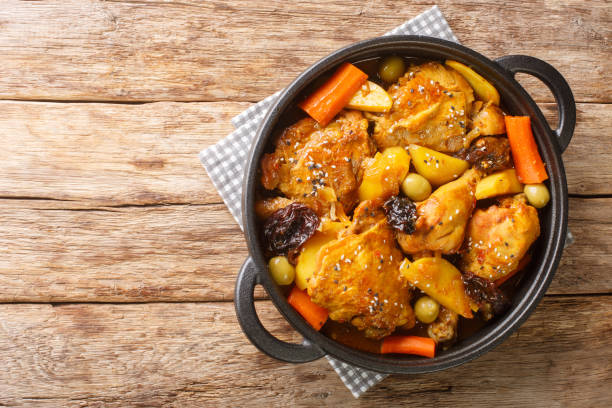
Braising pans are excellent for crafting delectable Braised Chicken with Vegetables. Begin by searing the chicken pieces on the broad surface to achieve a golden-brown exterior. Add a medley of vegetables and aromatic herbs, and let the braising process work its magic.
The controlled cooking environment, maintained by the snug-fitting lid, ensures that the chicken becomes tender and infused with the savory essence of the vegetables. The versatility of the braising pan allows for a one-pot wonder, producing a wholesome and comforting meal that captures the essence of slow-cooked perfection.
Famous Chefs and Their Braising Pan Recommendations
While specific endorsements from famous chefs regarding braising pans may not be widely documented, many renowned culinary experts have expressed preferences for certain types of cookware or materials that align with the qualities found in high-quality braising pans. For instance:
Gordon Ramsay
Known for his attention to detail and passion for quality, Gordon Ramsay often emphasizes the importance of durable and versatile cookware. His affinity for stainless steel pans aligns with the durability and even heat distribution offered by quality braising pans.
Julia Child
The iconic Julia Child was an advocate for heavy-duty cookware, promoting the use of materials like cast iron. Her preference for sturdy and heat-retaining pans resonates with the characteristics found in well-constructed braising pans.
Thomas Keller
Chef Thomas Keller, celebrated for his culinary expertise, is known to appreciate precision in cooking. The precise temperature control and versatility of braising pans may align with his preference for cookware that allows for meticulous execution of various cooking techniques.
Frequently Asked Question About What Is A Braising Pan
What is the magic behind a braising pan, and how does it elevate my cooking?
The braising pan, with its versatile design, evenly distributes heat, unlocking a symphony of flavors in your dishes. It’s not just a cooking utensil; it’s your culinary ally in creating mouthwatering meals.
Can a braising pan truly simplify my cooking process?
Absolutely! The braising pan’s multifunctionality allows you to sauté, braise, simmer, and even fry—all in one pan. Say goodbye to juggling multiple cookware items; the braising pan is here to streamline your kitchen experience.
Why is a braising pan a must-have for cooking enthusiasts?
The braising pan’s exceptional heat retention and distribution properties ensure that every ingredient is infused with deliciousness. Whether you’re a novice or a seasoned chef, this pan effortlessly brings out the best in your culinary creations.
How does the braising pan contribute to healthier cooking?
Thanks to its non-stick surfaces and precise temperature control, the braising pan allows you to cook with minimal oil while preserving the natural goodness of your ingredients. It’s a game-changer for those seeking a healthier approach to their meals.
What makes a braising pan stand out in terms of durability?
Crafted with high-quality materials, the braising pan is built to withstand the test of time. Its robust construction ensures longevity, making it a reliable companion for your cooking adventures for years to come.
Can the braising pan accommodate different cooking styles?
Absolutely! Whether you’re searing, stewing, or slow-cooking, the braising pan adapts seamlessly to your preferred cooking style. Its versatility empowers you to experiment and bring diverse flavors to your table.
How does the braising pan enhance my kitchen aesthetics?
Beyond its culinary prowess, the braising pan’s elegant design adds a touch of sophistication to your kitchen. With its polished look and functional features, it’s not just a cooking utensil but also a stylish addition to your culinary space.
Is a braising pan suitable for both beginners and experienced chefs?
Yes, indeed! The braising pan’s user-friendly design and intuitive features make it accessible for beginners, while its advanced capabilities cater to the discerning needs of seasoned chefs. It’s the perfect kitchen tool for everyone.
Can I use a braising pan on various stovetops?
Absolutely! The braising pan’s compatibility with different stovetops, including gas, electric, and induction, makes it a versatile choice for any kitchen. It adapts to your cooking environment, ensuring you can use it with ease regardless of your setup.
How does a braising pan contribute to culinary creativity?
The braising pan isn’t just a cooking vessel; it’s a canvas for your culinary imagination. Its functionality encourages experimentation, allowing you to innovate and create dishes that surprise and delight. Unleash your creativity with the braising pan!
Conclusion
In conclusion, a braising pan is a versatile and essential tool in the culinary world, serving as a hybrid between a frying pan and a pot.
Its unique design allows for both searing and simmering, making it ideal for preparing a wide range of dishes that require the combination of high heat and slow cooking. The ability to transition seamlessly from stovetop to oven adds to its convenience and flexibility in the kitchen.
Whether you’re searing meats, sautéing vegetables, or braising tough cuts of meat to tender perfection, a braising pan proves to be an invaluable asset for chefs and home cooks alike, elevating the art of cooking and enhancing the flavors of a diverse array of recipes.